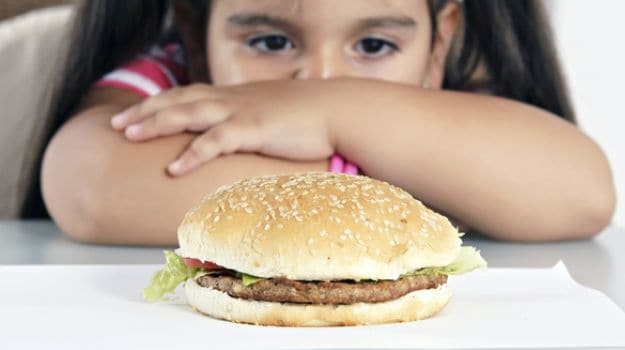Our changing lifestyles are challenging the healthier way of life and childhood obesity has become one of the most common concerns. This new study shows us why it needs to be given more attention.
According to a paper published in the journal Current Opinion in Endocrinology, Diabetes and Obesity, obese kids may have weaker bones. While obese children tend to have more muscles, the excess body fat may compromise other functions in their bodies, such as bone growth, says the study."It is a common understanding that, in children, muscle is a very strong determinant of how bone is going to grow," said lead author of the study Joseph Kindler from University of Georgia in the US."Obese children will tend to have more muscle, so we would suspect that they would also have larger, stronger bones," Kindler added.The researchers studied how muscle can influence different characteristics of bone geometry and strength in children. Based on an analysis of previously published research, the scientists found that muscle was a strong contributor to bone growth throughout childhood and adolescence. However, this relationship may differ in children with greater body fat.
The study talks about how excess fat that accompanies obesity can be deposited within the muscle. There is emerging evidence that suggests this fat within the muscle may have an effect on how the bone grows. Excess fat, specifically within the muscle, can influence the muscle and bone relationship in children is still under investigation, but there is clearly a connection, Kindler noted. There is a potential harmful connection between body fat and bone growth and children should strive to live a healthy lifestyle through proper diet and physical activity, the scientists recommended.Dr. Anju Sood, seconds the study and explains how the muscle replaces the fat layer beneath the skin when a person starts working out. During the growing phase, kids have a higher fat content and the lack of activity definitely leads to the deposition of this fat within the muscles. She adds, “The shift in lifestyle from traditional living to a more convenient one is the biggest culprit and our biggest challenge.”Dr.Sood suggests a three way approach to this problem. The very first should be to encourage kids to have a balanced meal and restrict convenient, processed foods. The next being stricter implementation and restrictions by the government in institutions to include mandatory hours devoted to physical activities. The last has to be a change in the lifestyle. She recaps how two decades ago we would talk more about the issues of malnourishment but today we are facing the double-edged sword of obesity, that’s rising as not only a major problem but also a root cause for many other diseases.With inputs from IANS
According to a paper published in the journal Current Opinion in Endocrinology, Diabetes and Obesity, obese kids may have weaker bones. While obese children tend to have more muscles, the excess body fat may compromise other functions in their bodies, such as bone growth, says the study."It is a common understanding that, in children, muscle is a very strong determinant of how bone is going to grow," said lead author of the study Joseph Kindler from University of Georgia in the US."Obese children will tend to have more muscle, so we would suspect that they would also have larger, stronger bones," Kindler added.The researchers studied how muscle can influence different characteristics of bone geometry and strength in children. Based on an analysis of previously published research, the scientists found that muscle was a strong contributor to bone growth throughout childhood and adolescence. However, this relationship may differ in children with greater body fat.
The study talks about how excess fat that accompanies obesity can be deposited within the muscle. There is emerging evidence that suggests this fat within the muscle may have an effect on how the bone grows. Excess fat, specifically within the muscle, can influence the muscle and bone relationship in children is still under investigation, but there is clearly a connection, Kindler noted. There is a potential harmful connection between body fat and bone growth and children should strive to live a healthy lifestyle through proper diet and physical activity, the scientists recommended.Dr. Anju Sood, seconds the study and explains how the muscle replaces the fat layer beneath the skin when a person starts working out. During the growing phase, kids have a higher fat content and the lack of activity definitely leads to the deposition of this fat within the muscles. She adds, “The shift in lifestyle from traditional living to a more convenient one is the biggest culprit and our biggest challenge.”Dr.Sood suggests a three way approach to this problem. The very first should be to encourage kids to have a balanced meal and restrict convenient, processed foods. The next being stricter implementation and restrictions by the government in institutions to include mandatory hours devoted to physical activities. The last has to be a change in the lifestyle. She recaps how two decades ago we would talk more about the issues of malnourishment but today we are facing the double-edged sword of obesity, that’s rising as not only a major problem but also a root cause for many other diseases.With inputs from IANS
Advertisement
For the latest food news, health tips and recipes, like us on Facebook or follow us on Twitter and YouTube.
Tags:












